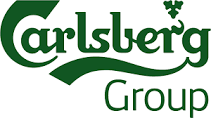The Green Fiber Bottle

Originally posted on Carlsberg Group
Packaging is a very visible and tangible part of the Carlsberg Group’s product offering. Unfortunately, it is also a major contributor to our CO2 emissions. Our approach is therefore to try to optimise the use of resources in a way that balances product integrity and functionality with environmental impact. Brewing is our core business, not packaging, so we draw on the support of others along the supply chain to achieve our aims.
COLLABORATING WITH INNOVATORS
In 2015, in continuation of our collaborative approach within the Carlsberg Circular Community (CCC), we initiated a development project with Danish packaging company EcoXpac – supported by Innovation Fund Denmark and the Technical University of Denmark ‒ to develop a beer bottle made from sustainably sourced wood fiber.
FULLY BIODEGRADABLE PRODUCT
Together we are developing the Green Fiber Bottle, which will be a landmark in sustainable innovation. Its fibres will come from responsibly managed sources, with trees replanted at the same rate that they are harvested, or even faster. Furthermore, any potential impact from using fibres will be included in the environmental assessments. And while the bottle will degrade into environmentally non-harmful materials if discarded randomly, the intention is that it will form part of a proper waste management system, just like today’s bottles and cans. Over the three-year development phase, we plan, with our partners’ help, to optimise the bottle from an environmental perspective using both life cycle and Cradle-to-Cradle® assessments.
LESS ENERGY
We expect that the Green Fiber Bottle will require less energy to produce than traditional packaging, due to the use of a new fibre-drying technology. This will help reduce dependency on fossil fuels in the manufacturing process.
COMMITTED TO COOPERATION
This collaborative project confirms our commitment to cooperation and underlines the importance of a circular economy for sustainable growth. If the bottle innovation comes to fruition within the projected three-year period, as we expect it to, it will provide an exciting new packaging type for our products and represent another important step on our journey towards a circular, zero-waste economy.

